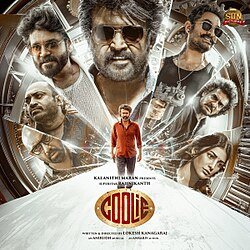What Does “Coolie” Mean—Historically and Today?
The term “Coolie” originated from South Asian languages like Hindi, Tamil, and Urdu, meaning day laborer or hireling. In Chinese as 苦力 (kǔlì), meaning “bitter labor” (QA Edu, Wikipedia). During the British colonial period, the word came to describe indentured or low-wage laborers. Often subjected to harsh working conditions on plantations and railways .
Today, the term is largely considered a derogatory slur—a racialized label for Asians, carrying painful echoes of exploitation .
Beyond the Slur: “Coolitude” and Cultural Reclamation
In some parts of the world, especially within the Indian diaspora, the word has been recontextualized. The concept of “Coolitude”, pioneered by Mauritian poet Khal Torabully, reclaims “coolie” as a symbol of migrant identity (Coolitude).
Remarkably, in certain Caribbean dialects or the UK, it’s been used colloquially. Sometimes with reference to curly hair or mixed Indian/African heritage—but context, tone, and audience awareness matter greatly (Reddit, WiWords).
A commenter on Reddit shared:
“In the UK it’s generally used to describe a black woman’s hair type… of West Indies background.”
– (Reddit)
The “Coolie” Trend in Pop Culture: Films, Literature & Music
| Medium | Highlights |
|---|---|
| Novel | Coolie (1936) by Mulk Raj Anand, follows the trials of a 14-year-old laborer under British-exploited caste systems (Wikipedia) |
| Cinema | Iconic portrayals include Deewaar (1975) and Coolie (1983), often casting laborers as gritty antiheroes or working-class icons (Wikipedia, profilbaru.com) |
| Music | Chutney track “Coolie Bai Dance” celebrates Indo-Caribbean laborers’ lives (Wikipedia) |
Rajinikanth’s New Film Coolie (2025): A Cultural Phenomenon
Recently, the term “Coolie” took center stage once more.This time as the title of a highly anticipated.
Box Office Buzz
- Advance bookings have exceeded ₹51 crore worldwide, with ₹14 crore from India and ₹37 crore from international markets (Indiatimes).
- Potentially eclipsing Rajinikanth’s own 2.0 (₹100 crore) (Indiatimes, The Times of India).
Fan Frenzy
- In Kerala, fervent fans are flocking to theaters. Even agreeing to 6 AM shows to catch the action—signaling a full-blown cinematic mania.
- In Tamil Nadu, devotees in Madurai performed temple rituals. Praying for the film’s success—cementing Rajinikanth’s status as a living legend beyond mere entertainment (The Times of India).
On-Screen Highlights
- A viral BTS photo with Rajinikanth, Aamir Khan, and Shruti Haasan has heightened pre-release excitement (The Times of India).
- The song “Monica”—a tribute to Monica Bellucci—went viral. With the actress herself praising Pooja Hegde’s electrifying performance (The Times of India, Wikipedia).
- Composer Anirudh Ravichander made headlines by openly admitting to using AI (ChatGPT) for lyrics—reflecting how technology intersects with creativity.
Final Thoughts
The term “coolie” carries a vast and complex legacy—laden with colonial exploitation, cultural reclamation, and now cinematic spectacle. From historical novel to Rajinikanth’s blockbuster, it exemplifies how a single word can evolve—and command attention across generations.


